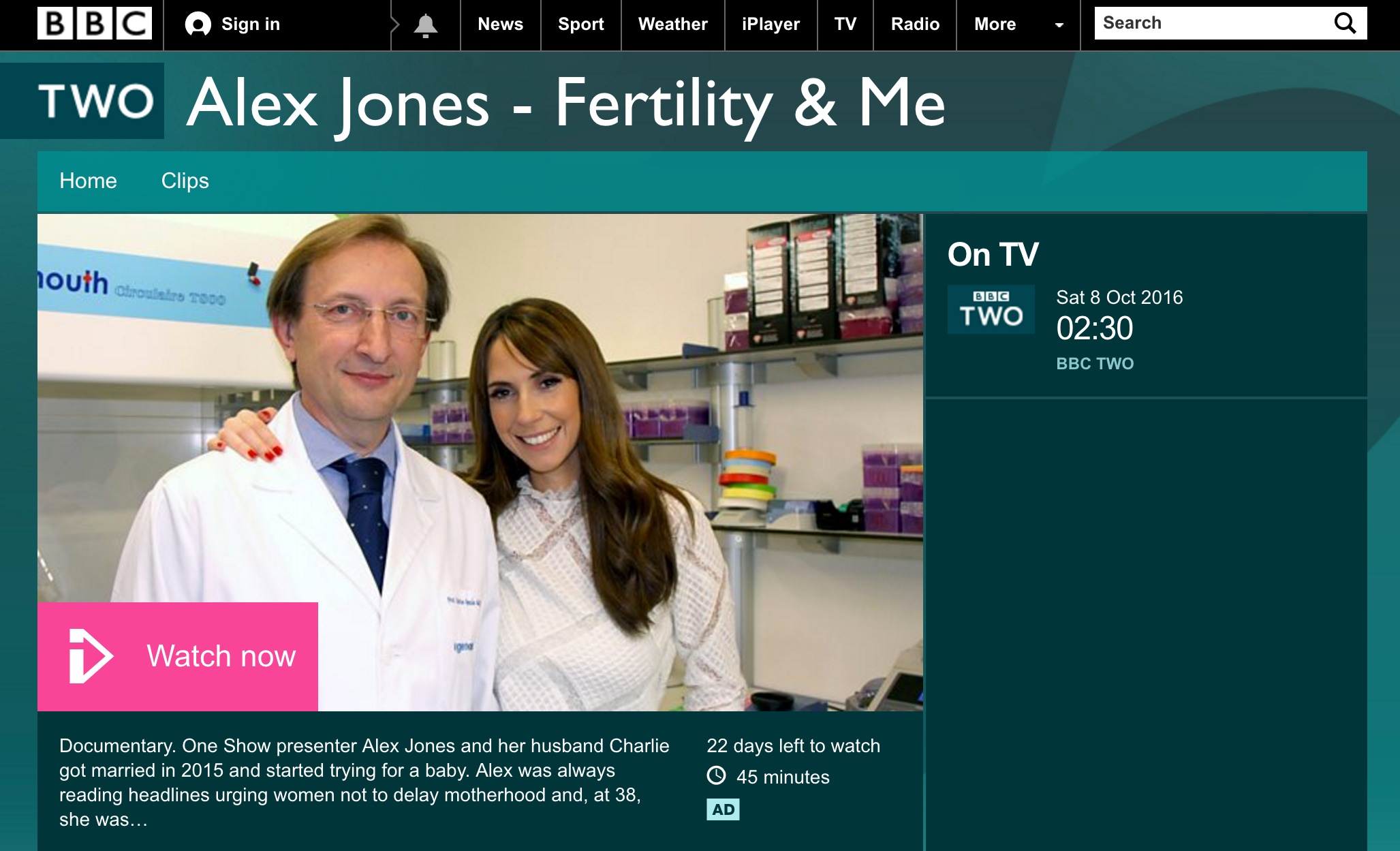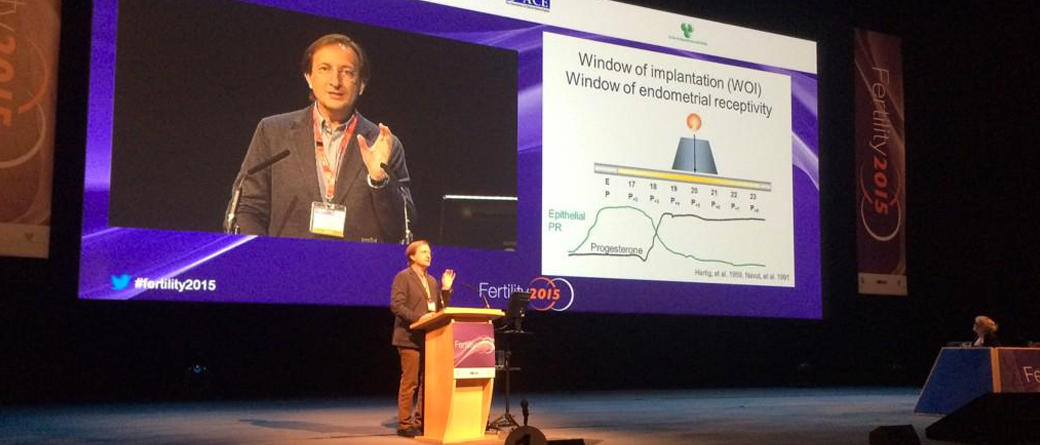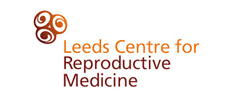First baby born by mitochondrial donation
The Three Parent Baby
In the national news this week we have heard the report of the first baby to be born by this novel technique to prevent the transmission of a devastating illness that would have led to an early death.
Listen to Adam discuss this on BBC Radio 4’s The World Tonight
The family from Jordan were treated by a New York team who, because the therapy is illegal in the USA, carried out the procedure in Mexico. An apparently healthy boy was born in April and the case is presented in an abstract to be presented at the American Society of Reproductive Medicine (ASRM). This begs the question as to why the case has not been reported in a peer-reviewed publication and thereby open to full and proper scrutiny of the technology used. There is no doubt that such a significant case would have been processed rapidly by any top scientific journal.
What is mitochondrial disease?
Mitochondrial disease is a group of disorders caused by dysfunctional mitochondria, the organelles that generate energy for the cell. Mitochondrial diseases are devastating for the individual and may lead to poor growth, loss of muscle coordination, muscle weakness, visual problems, hearing problems, learning disabilities, heart disease, liver disease, kidney disease, gastrointestinal disorders, respiratory disorders, neurological problems, autonomic dysfunction and dementia. This leads to severe disabilities and often death at a very young age. There are a number of different types of mitochondrial disease and if they run in a family, different family members can be affected in different ways. It is thought that approximately one in ten thousand people may have a mitochondrial problem – sometimes only leading to mild illness but the more severe forms become apparent in infants and lead to major disability and early death.
Most cells in the body contain a central nucleus, which holds the genetic material which determines bodily functions and in the cytoplasm (or jelly like fluid) around the nucleus are hundreds of mitochondria, which convert the energy of food molecules into the energy that is vital for normal cell function. If the mitochondria are abnormal then cells cannot function.
Mitochondria are inherited from the mother and defective mitochondria are therefore found in the egg. The new technology can be performed in two ways: The case reported used “spindle transfer” and involves using a donor egg, removing its nucleus, and then replacing it with the nucleus from the mother who has affected mitochondria and then fertilizing it with the father’s sperm to create an embryo. The alternative technique uses a fertilized egg and the fertilized nucleus will be removed and transferred into a fertilised donor egg that has had its nucleus removed (so called pronuclear transfer).
These techniques will enable families who have been devastated by the loss, often of several children, to now have healthy children in the future.
Thus there are three contributors to the embryo – the eggs from two women and the sperm of the father. The baby conceived in this way therefore inherits the genetic characteristics of its biological parents and inherits the healthy mitochondria from the donated egg, which contributes less than 0.1% of the DNA to the cell but will be continued through following generations – in other words permanently altering the genetic profile of the individual.
The UK has very strict regulation for what we can do and last year the House of Lords approved this treatment in the UK, where it has been pioneered in Newcastle. This has been after extensive ethical and scientific scrutiny and public consultation, run by the HFEA. The treatment hasn’t yet begun in the UK but the plans are for it to be performed in a single centre (Newcastle), carefully monitored and of course with very careful follow up of the children born. It is right and proper that we have strict but at the same time permissive regulation and appropriate plans in place to monitor the technology and babies born.
It is concerning that as the treatment is not allowed in the USA, the scientists went to Mexico where it isn’t regulated and this resulted in the baby reported this week. We do not have any scientific details, any details of how many times they may have attempted and failed or any idea of the surveillance and long term follow up of the baby/babies. We therefore have to be very cautious about this report, as the science has been the subject of peer review and is only an abstract at a meeting.
Listen to Adam discuss this on BBC Radio 4’s The World Tonight
Alex Jones – Fertility & Me
A documentary for BBC One

Last week a new TV programme Alex Jones- Fertility & Me was broadcast on BBC1.
I was the consultant medical advisor to the programme, which was a new role for me and one that was both interesting and challenging.

I met Alex at the beginning of the year with the producer, who wanted to explore factors that affect natural fertility. Alex is high profile and best known for her daily appearance on The One Show. Last Christmas she got married at the age of 38, after which she discovered that her mother had gone through an early menopause at 43. She therefore had a very personal reason for exploring the factors that might influence her fertility.
Following initial research and discussions I felt it was important the programme considered the key factors that are known to influence natural fertility in both men and women such as, body weight, the need for supplements and the factors that affect male fertility, including exposure to environmental toxins and testicular warming.
1.7 million viewers
Although it didn’t cover the key factors affecting fertility, the programme was a real success. After months of planning, various script changes and interviews in many different locations in the UK and abroad, Alex and the production team presented this complex subject in straight-forward, engaging and empathetic way. The results spoke for themselves. The programme was watched by 1.7 million viewers and had a very healthy audience share of 17.6% for that particular time of day.
Assisted Conception and Endometrial Receptivity Testing
The contributions by my colleagues, Allan Pacey and Tim Childs came across particularly well and I thought the programme covered assisted conception in an interesting and balanced way. For example, it didn’t just look at standard IVF, but included some of the new advances that are taking place as well. Alex went to Spain to look at endometrial receptivity testing, which is an exciting advance, albeit still in a research phase and certainly not universally available.
Alex was also filmed in Gothenberg, where uterine transplants for women who are born without a uterus have been pioneered. Whilst this is by no means mainstream it is certainly of great interest for the future.
The programme didn’t have time to include all of the main causes of infertility, which from my point of view as a consultant, was disappointing. I felt the BBC could have extended the subject matter to a three-part series incorporating three distinct areas:
1. The factors that affect natural fertility, including, most importantly, the age of the woman and to a lesser extent the age of the man (the key issue for Alex).
2. The causes of infertility and their treatments.
3. Finally, a third programme on modern advances and what may be available in the future.
Nonetheless, I was able to influence the single programme format by advising on the script and rewriting parts of the narrative when necessary.
Congratulations Alex!
Of course the programme ended on a very positive note with the announcement that Alex is expecting her first child. Like many people I am delighted for both Alex and her husband and wish her well on the journey through pregnancy and beyond.
Further information about the programme on the BBC website here
ESHRE Conference 2016
My Overview

I have just returned from ESHRE, the annual European meeting that covers all aspects of reproductive science and medicine. There were many interesting presentations and a lot of publicity, although it’s interesting how the press pick up on stories that catch the imagination rather than reflect ground-breaking science. For example, there was a lot of interest in the study that demonstrated that lying down after intra-uterine insemination (IUI) treatment doesn’t increase the chance of conception, compared with getting up straight away. A number of journalists tried to extrapolate this into natural conception and whether it matters what women do after intercourse and whether it’s a myth that you should lie on your back with your legs in the air, which of course isn’t answered by this study.
I liked the way I was quoted in the Daily Telegraph, after I was asked about the best way to conceive naturally:
“After you have had sex, do whatever you want but don’t smoke,”
Professor Adam Balen, chairman of the British Fertility Society, added: “The important thing to say, is that if you want to get pregnant, have lots sex – as much as you want, however you want – and enjoy it, rather than focus on the time of ovulation.” He said there was a lot of confusion about female anatomy, which meant many couples imagined a straight vertical line between the womb and vagina. Couples might prefer to snuggle up after sex, but it would make no odds to their conception chances, he said. “The vagina is tilted and the womb is then tilted relative to the vagina and fallopian tubes and the ovaries, so it is not just one passage. So when you get up, many women think that everything is just going to fall out but anatomically that is not going to happen,” he said. Prof Balen singled out just one bedroom act which would damage conception chances – lighting up a post-coital cigarette. “After you have had sex, do whatever you want but don’t smoke,” Dr Balen said.
The danger of paying too much attention to papers presented at conferences is that the abstracts available before the meeting often don’t tell the whole story and when the presentations are given we can then identify flaws in the science. Furthermore many papers that make the headlines never make it into peer-reviewed journals. For example there was a lot made of a study suggesting that acupuncture might double the chance of conception with IVF but the figures presented were wrong, the study design flawed and the paper heavily criticised by experts in the audience.
I was very impressed by the work of Justin St John, from Australia (who incidentally was in the same A level class as me at school in London back in the ’70s), who has been looking at the effects of enhancing oocyte function by manipulating mitochondrial activity in animal models. In the same session Professor Evelyn Telfer from Edinburgh described her hunt for the elusive “oocyte precursor or stem cells” that might represent the ability of the ovary to produce new eggs, challenging the common belief that at birth the ovary has a fixed number of oocytes, which are then lost progressively over time. She has found the cells but is still uncertain as to whether these may be viable as fertilisable oocytes that could turn into embryos and create a pregnancy.
Pre-implantation Screening of Embryos – Is this the future?
There was a lot of interest in the pre-implantation screening of embryos both to access their genetic integrity, but also the mitochondrial DNA in trophectoderm biopsy of the outer layer of cells in day 5 blastocyst embryos. Is this the future? Well it’s too early to say for sure, but the technology is advancing at a pace with the latest genetic techniques and the ability soon to combine both genetic and mitochondrial screening into a single assay. Whether this technology should be universally applicable is still to be determined – but the field is developing rapidly.
Personalised Medicine was a Key Theme
One of the mantras of the meeting was “individualisation of treatment” or “personalised medicine” and this was the theme of the key note lecture that I gave on ways to predict response to ovarian stimulation and how to minimise the risks of over-response. Too much has been made of “mild” or “minimal” IVF these are obsolete terms, in my view, as all IVF should use the lowest effective dose to achieve stimulation so, in essence, all IVF should be as mild as possible, which is certainly how we approach IVF in Leeds and I believe this to be the case throughout the UK.
There is continued interest in our drive to enhance fertility education to young people by way of informing them about what happens naturally during puberty, how to understand the biology of reproduction in order that they can have safe sex, avoid unwanted pregnancy and at the same time be aware of the factors that may influence their fertility for the future. This is all part of the Fertility Education Initiative that I have started within the BFS and together with many other national organisations. Please see the BFS website for the latest on this and other BFS activities that I am leading on, including a drive to improve the funding of fertility treatments in the UK. I applaud the Scottish Government’s move to increase funding to three cycles, even for those who may have a child from a previous relationship. I am actively involved with the Fertility Fairness campaign and I have been in communication with the HFEA, DH and NHS England to seek equity around the UK.
Once again I was misquoted in the press as I was reported as saying that we should be teaching 9 year olds about infertility. This isn’t what I said – I simply said that 9 year olds need to be introduced to an understanding about how their bodies work!
In my role as Chair of the British Fertility Society we have also had a very busy few months, with a very well attended Training Course in April and the Study Week in June. The reproductive medicine session at the RCOG World Congress in Birmingham last month was packed and the scientific presentations of a very high standard and I gave a key note lecture on PCOS.
First Birth from Ovarian Tissue Transplant
Finally I would like to congratulate Professor Richard Anderson and his team in Edinburgh who recently announced the first birth in the UK from an autologous transplant of cryopreserved ovarian tissue – a very impressive and important milestone for our field.
Women over 40 having more babies than under 20s
New Data from Office for National Statistics
I thought I would share some interesting new data, recently published by the Office for National Statistics (ONS), about the number and age of women giving birth in the UK.
Here are the facts:
Women over 40 are having more babies than the under 20s for in the first time in nearly 70 years. These are official figures for England and Wales.
There were 697,852 live births in 2015.
There were 15.2 births per 1,000 women aged over 40, compared with just 14.5 per 1,000 women in their twenties.
The last time the over 40s had the higher fertility rate was in 1947, in the wake of WWII.
The figures show two key trends in who is having children and when they have them.
Teenage pregnancy Is In Decline
Firstly, it is good to see that the teenage pregnancy rate has been in long-term decline and has more than halved from the 33 births per 1,000 teenagers in 1990.
Pregnancies For Older Mothers Have Increased
Secondly, pregnancies have soared in older age groups from 5.3 per 1,000 in 1990. The average age of having a child is now 30.3 – a figure that has been increasing since 1975.
The ONS says that advances in fertility treatment, as well as more women in higher education and attitudes around the importance of a career and the rising costs of childbearing, are behind the rise.
Liz McLaren, head of vital statistics outputs at the ONS, said: “The trend for women to have babies at older ages continued in 2015. Over the last 40 years, the percentage of live births to women aged 35 and over has increased considerably. Women aged 40 and over now have a higher fertility rate than women aged under 20 – this was last recorded in the 1940s.”
The data also shows that fertility rates have dropped in all age groups under 25, while increasing for all age groups 30 and over. Women aged between 30 and 34 have the highest fertility of any age group – with 111 births per 1,000 women.
The number of births to women born outside the UK has also continued its rise, reaching 27.5% of all births.
The British Pregnancy Advisory Service said: “The trend towards older motherhood is here to stay, and there are many understandable reasons why women today are waiting longer to start or expand their families than those in previous decades.Rather than bemoaning this development, we should seek to understand and support the decisions women make. More affordable childcare and improved maternity rights may make it easier for some women to start their families earlier if they wish, but we also need to ensure we have high quality reproductive healthcare services configured to meet women’s needs, whatever the age at which they conceive.”
Couples Need To Make Informed Choices About When To Have A Baby
In my view, these new statistics illustrate the fact that women are having babies later in life, a trend that has occurred over the last few decades. For a range of social, professional and financial reasons, women are starting families at an older age and this trend is unlikely to be reversed. As healthcare professionals, our role is to advise both men and women about the implications that maternal age can have for fertility, pregnancy and birth and enable couples to make informed decisions about when to plan a family.
We know that female fertility starts to decline gradually from the late 20s and more rapidly from the mid-30s onwards. While the risks should never be overplayed, men and women should be aware that reproductive outcomes are worse in older women. As well as it potentially taking longer to get pregnant, later maternity can involve a greater risk of miscarriage, a more complicated labour, and medical intervention at the birth.
Fertility Treatments Don’t Work For Everybody
Although fertility rates for women aged 40 and above have been generally rising fast, this is contributed to by fertility treatments, and natural fertility among women in their 40s is still considerably lower than for women in their 30s. Furthermore, treatments such as IVF don’t work for everybody and success rates also decline with increasing female age.
Fertility Education Initiative – A New Education Programme By The British Fertility Society
The British Fertility Society (BFS), of which I am Chair, is committed to raising awareness among young people around their reproductive health. We have recently set up a new taskforce called the Fertility Education Initiative, to ensure that the knowledge components of sex and relationship education not only cover how to avoid pregnancies and sexually transmitted infections, but also include information about fertility to help people plan for their future.
Building Awareness of Fertility in the UK
Fertility Health Summit 2016
After months of planning, on Friday April 15th, 2016 I chaired The Fertility Health Summit: Choice not Chance, a launch event to raise national awareness about the need to improve Sex and Relationship Education for young people.
http://[link]
The summit was led by the Fertility Health Task Force (FHTF), a group of the UK’s most senior professionals from health, education and government. This is led by the British Fertility Society, the Faculty of Sexual and Reproductive Healthcare (FSRH) and the Royal College of Obstetricians and Gynaecologists (RCOG).
Our event was the start of a much larger, three year work programme and included 13 high-level presentations by leading UK and overseas professionals in the field, as well as a representative group of young people. As far as I’m aware it is the first time that such a group has come together to discuss this important subject and I am really grateful to everyone for their contributions on the day.
To set the event in context, I presented the latest national data, which indicates:
• More women in the UK are now having children over the age of 35 than under the age of 25.
• For the first time, over 50% of babies born in the UK are to women over 30.
• Fertility declines progressively through life and many women are choosing to delay trying for a family until their mid- to late thirties, when fertility is more rapidly declining.
• In the UK 20% of women will never have had a child, which is twice the percentage of their mothers’ generation. There are many complex socio and economic reasons for this.
A national survey of 1000 16-24 year olds (male and female) was commissioned specifically for the FHTF. The key findings showed worrying gaps in knowledge about fertility and reproductive health:
• Around 80% of both sexes believe women’s fertility only starts to decline after the age of 35, and a quarter of boys think women’s fertility starts to decline after the age of 40, compared with 16% of girls.
• Two-thirds of those surveyed thought a man’s fertility only starts declining after the age of 40, with a third believing it declined until after 50.
While the decline in fertility is less dramatic for men, fertility rates for both sexes actually decline gradually from the late 20s, and can be affected by genetic and environmental factors such as smoking, obesity and nutrition.
• 94% of those who did not already have them said they would like to have children in the future.
• Of those who said they wanted children in the future, three-quarters of girls (76%) and two-thirds of boys (64%) said they would like to have children before they are 30.
• The vast majority of young people – around 9 in 10 – are aware that women are most fertile under the age of 30
• Encouragingly, 80% of girls and two-thirds of boys (66%) are aware that age is the number one factor which affects female fertility
• Girls tend to consider that a higher number of factors affect their fertility than boys
o Two-thirds of girls are now aware that being overweight or underweight affects fertility
o 40% of girls mistakenly believe that having a miscarriage or being on the contraceptive pill for too long can adversely affect fertility
• Substance abuse (drugs, alcohol, steroids) is perceived to be the main factor affecting male fertility – this does affect fertility but age remains the most common factor
• Around 50% of young people did not recall seeing, hearing or talking about fertility in the past year
I have summarized the key points made by the expert speakers and panelists at the Fertility Health Summit as follows:
The vital issue of fertility health is sadly neglected in the UK.
This is not only unfortunate but remarkable, since people say that having children is the most important decision in their life, and fertility problems are the major health problem/issue experienced by the 25-44 age group, as discussed by Professor Søren Ziebe (Rigshospitalet, Copenhagen).
The sub-title of the Summit: ‘Choice not Chance’ was apt, as pointed out by Professor Lesley Regan, RCOG Vice President for Strategic Development, and she emphasised the ‘need to empower people to understand/know about their fertility’; as opposed to approaching it with despair and resignation, or as expressed by the organisation My Fertility Matters, ‘I can only protect what I value and respect’.
There is an overwhelming desire and need for more information about fertility and reproductive health amongst young people.
Naomi Sheppard, Head of Participation and Volunteering at Brook Youth Educators (www.brook.org.uk/our-work/our-education-programmes), the UK’s leading provider of sexual health services and advice for young people under 25 said it was vital to share such information with young people, a message that was echoed by many young representatives invited to attend the day.
Infertility can be a devastating and tortuous medical and emotional experience.
One female delegate gave a moving account of the ultimately unsuccessful, journey she undertook to overcome her infertility, during which she felt the victim of her own deficiency in knowledge about the basic biology of human reproduction with which to counter the heavy moral arguments she was subjected to.
Professor Judith Stephenson, from the Institute for Women’s Health, University College London, said it was important to consider the various stages couples go through in having a baby, from ‘pre-pre-pregnancy’ (i.e. non-urgent thoughts about conceiving) though ‘pre-pregnancy’ (‘we would like a baby’) to the real attempts to become pregnant.
The Keynote Speech at the Summit was given by Alex Jones, Broadcaster and co-host of BBC’s The One Show who gave an inspirational talk on her personal experience as a woman in her late 30s who is considering her own fertility journey. Alex shared stories of family and friends who had experienced infertility, as well as those she encountered in making a forthcoming BBC TV documentary, ‘The Truth About Fertility’.
Sex, pregnancy and fertility is taboo in the UK.
Professor Joyce Harper, from University College Hospital London IVF and Reproductive Genetics Group and the mother of three boys conceived by IVF, gave a passionate address on the question ‘How can we engage parents, schools and social media?’ Building on her experience in schools and with parents, she said that ‘sex, pregnancy and fertility is taboo in the UK’ She felt that SRE should be taught in primary schools and bemoaned the fact that all school ‘Academies’ in the UK can opt out of providing such lessons. She felt this was especially unfortunate since parents did not have the appropriate experience to deliver the information required.
Academy schools can opt out in the UK and yet SRE is vital for young people.
Lucy Emerson, Co-ordinator of the Sex Education Forum, talked about ‘The opportunity in schools’, which included:
• Listen and respond to the needs of young people
• Deliver appropriate messages from 3-19
• Train teachers in SRE
• Links with local health authorities
• Involving parents and carers
Improvements in education on reproductive health and fertility must continue to include advice to reduce rates of pregnancy amongst 16-18 year olds.
Alison Hadley OBE, Director of the Teenage Pregnancy Knowledge Exchange (based at the University of Bedfordshire), talked about her work to lead a previous UK government’s initiative (1999-2010) to address the high levels of under 18 conception rates; a programme which achieved a reduction of 42% to the lowest level for 40 years. In the context of the Summit, the successful programme led by Alison Hadley was an excellent case study showing what can be achieved when young people are provided/empowered with the information to make informed choices.
Further evidence of the lack of awareness about fertility, the body and health was considered by Dr Abha Maheshwari, Consultant & Honorary Senior Lecturer Reproductive Medicine, Aberdeen Royal Infirmary. She said it was unfortunate that while women were delaying childbearing, younger mothers also risked being stigmatised for becoming pregnant too early. Abha’s work also highlighted a startling lack of SRE in the undergraduate medical curriculum.
Fourth year medical student and a director at youth organization, Sexpression, Jennifer Dhingra, described a different but important approach to empowering young people to make decisions about sex and relationships. Sexpression is student led with about 700 volunteers across 25 UK universities. It runs informal but comprehensive sex and relationship interactive sessions in schools and clubs on topics such as sexually transmitted infections, contraception, consent and sexuality. The sessions have ground rules and are interactive but are confidential and include the facility for anonymous questions to be posed via a ‘suggestion box’.
Two leading experts on fertility education from overseas countries were invited to address the conference to share their experiences of building a national programme.
Professor Søren Ziebe’s showed that Denmark is well ahead of the UK in the provision of SRE at all levels. With South Sweden, it has an impressive fertility assessment and counselling service; there are Fertility Ambassadors (mainly sports people) and the slogan ‘From treating childlessness to building families’. Professor Ziebe emphasised that these initiatives operated against the background of a falling birth rate in Denmark. Couples are urged not to delay childbearing and 9% of babies are conceived through IVF, compared with 3% in the UK. Professor Ziebe runs a popular fertility assessment and counselling clinic, which enables couples to get accurate information about their potential for having children. He also described a number of innovative ways in which public health messages have been given out in Denmark, with poster campaigns, prime time television programming and the use of campaigns that emphasize to men the positive aspects of fatherhood.
The last speaker at the meeting was Dr Elisabeth Raith-Paula President of the Association, My Fertility Matters (MFM) in Germany. (www.mfmprojectuk.org). An award-winning sex education programme, MFM provides fertility education for almost 40,000 young people every year and is now being rolled out in other European countries. The popularity of the programme is due to innovative teaching sessions, which are tailored to each age group, including parents.
The summit concluded with a panel discussion and debate amongst an esteemed panel of experts, expertly chaired by Professor Regan. While different shades of opinion were obviously expressed, there was agreement that the meeting had been a great success in highlighting the central aim: ‘to ensure that young people have a greater understanding and awareness of fertility and reproductive health so they can make an informed choice about their fertility journey.
I’d like to thank all my colleagues on the Fertility Health Task Force for their contributions to what can only be described as a hugely successful event to mark the start of an exciting, albeit challenging, programme to improve knowledge of fertility and reproductive health amongst young people in the UK.
I am grateful to Dr Jane Stewart for taking photographs at the event and Professor Henry Leese, who took notes during the summit and wrote a summary for me.
Launch of National Campaign for Greater Fertility Awareness in the UK
There have been many stories in the press recently about the lack of awareness about fertility and its decline with age. Indeed there have been calls to change the school PHSE curriculum, and introduce ‘Fertility MOT’s’ at 25, to make sure people are aware of the facts, before it’s too late.
As a consultant at one of the busiest reproductive medicine units in the UK, I am acutely aware of the sheer numbers of women (and men) who are shocked when faced with the reality that it might not be as easy to start a family as they first thought it might.
Of course, as specialists in the field, it is our job to do all we can to help and there are several options of assisted conception available. Nevertheless, I think it is important to be as realistic as possible before treatment options are started upon, so that expectations are managed and informed choices made.
Greater awareness of fertility is needed
In the last week there have been several articles in the national press about ‘Fertility MOTs‘ for women at the age of 25. The Times, The Telegraph, The Guardian and Daily Mail have all published stories which I have contributed to and I am really pleased we have been able to raise awareness about the natural decline in fertility with age.
The term ‘Fertility MOT’ needs clarity. The British Fertility Society (BFS) is not calling for a specific ‘MOT’ or fertility test for young females. What we want to do is take the opportunity to talk about their fertility and what it means for them. A good time to do this is when females come for their first smear test, usually at the age of 25.
Good news to start the week
It gave me great pleasure this week to hear good news from two couples recently.
One couple brought in their 11 week-old baby daughter, who was conceived after a couple of years under my care. Treatment included some quite exacting surgery to correct problems within the uterus. The surgery is extremely specialised and is only performed in a few centres. So it was a great thrill when the couple conceived. It was a real privilege to meet the baby.
Fertility 2015

There was a wonderful feeling of excitement at the Fertility 2015 Meeting that took place in Birmingham just after New Year.
Once again, this three-day meeting brought together scientists, nurses, counsellors and clinicians, combining the efforts of the three main fertility societies in the UK, namely the British Fertility Society (BFS), the Association of Clinical Embryologists (ACE) and the Society for Reproduction and Fertility (SRF).













